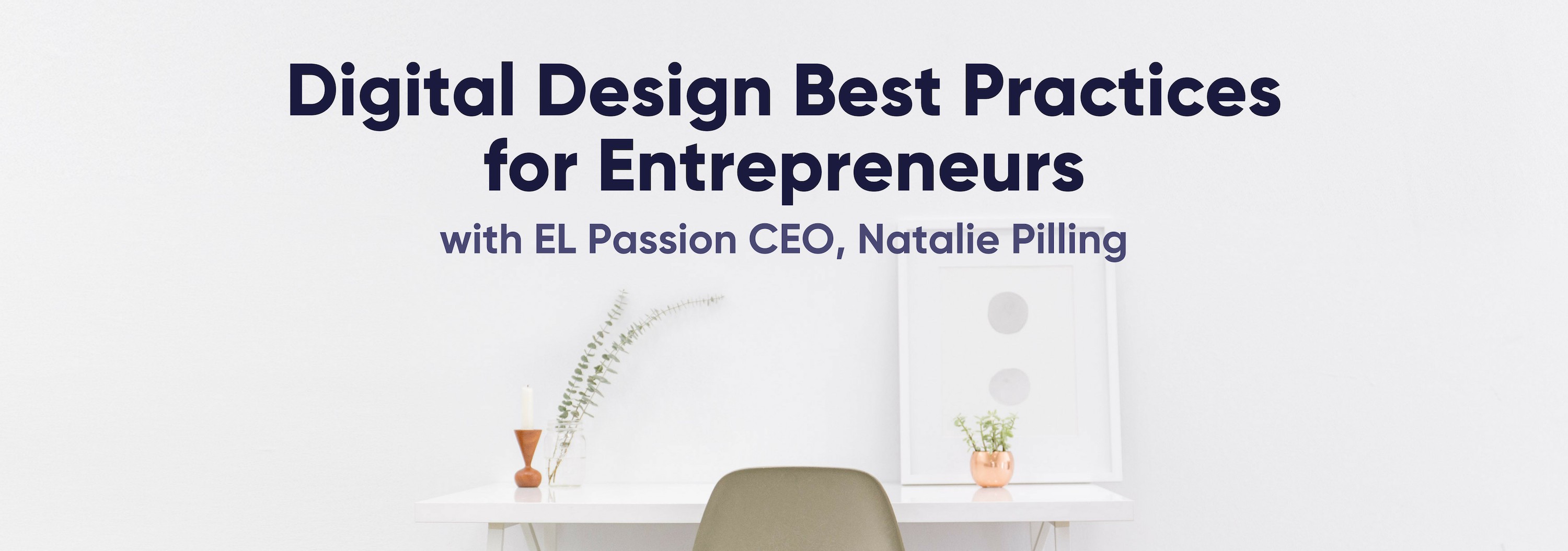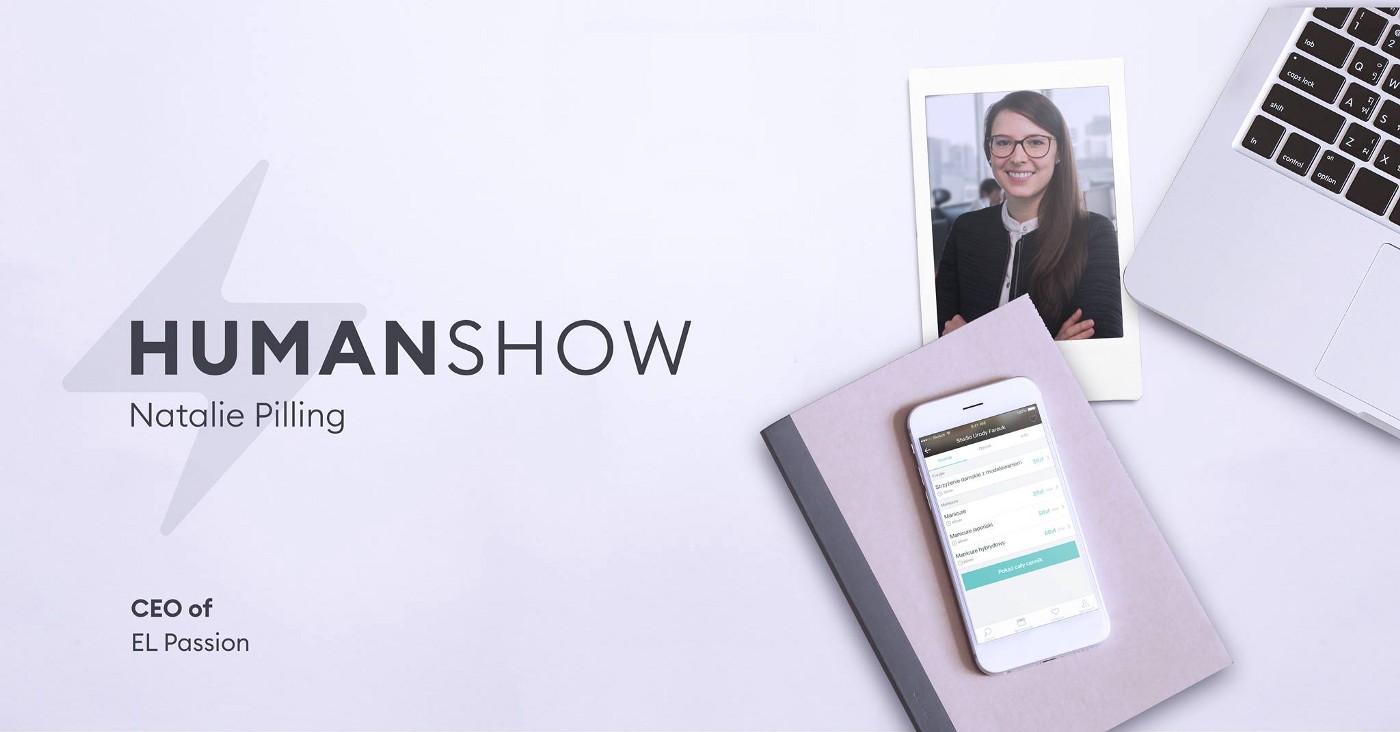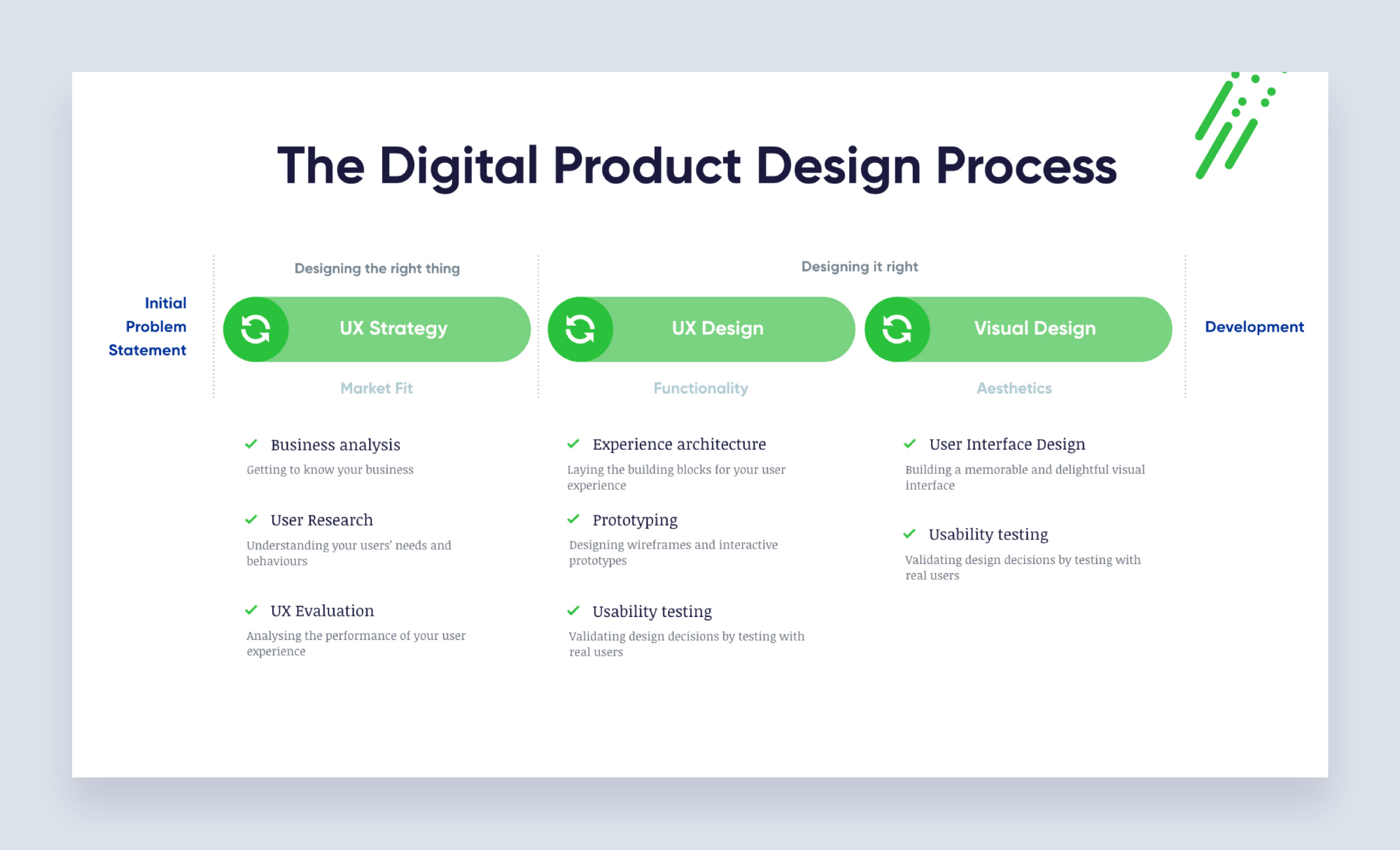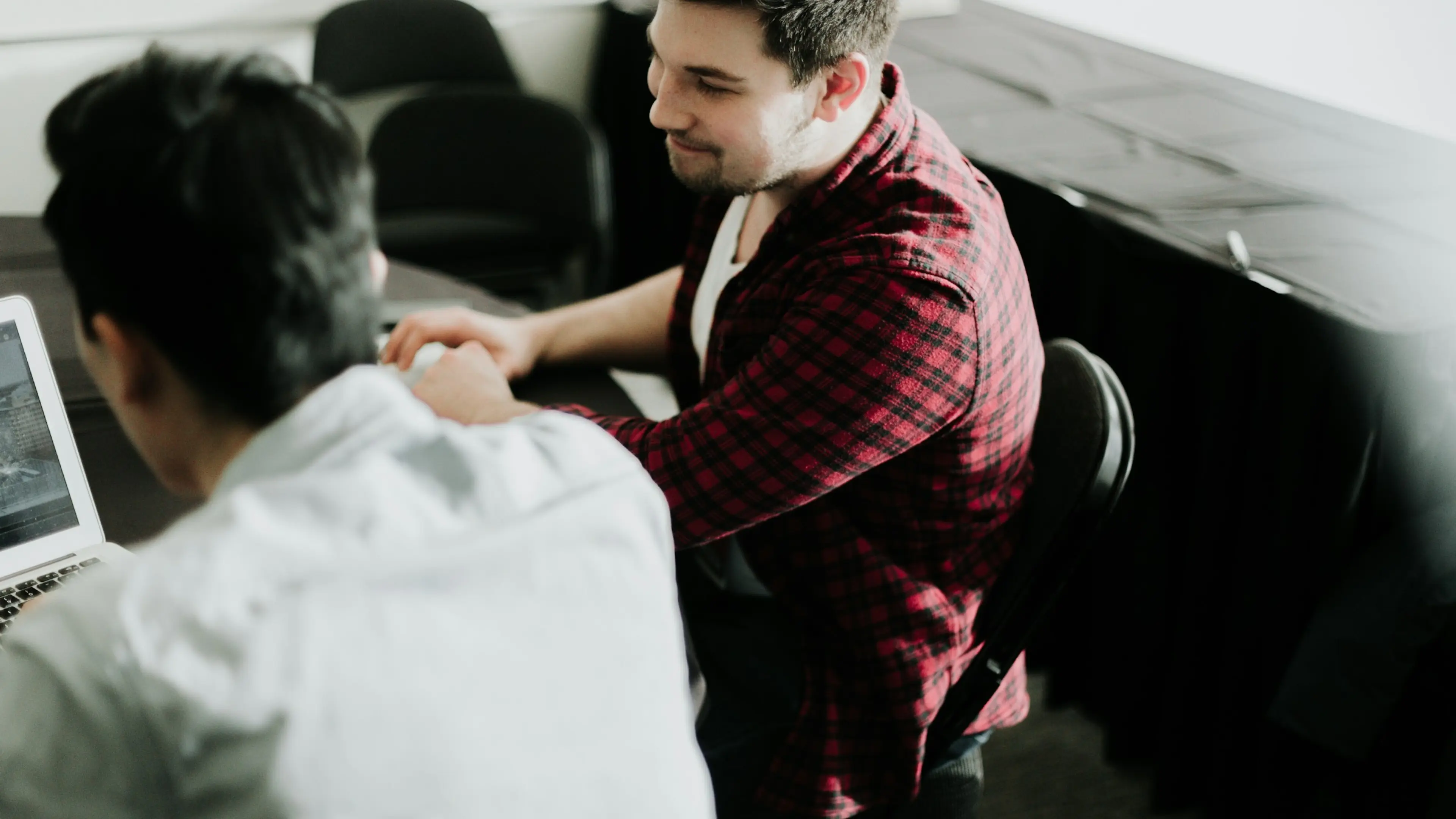7 November 2018 (updated: 30 October 2020)
Design A Successful Product: Product Design Best Practises For Entrepreneurs
Chapters

Natalie Pilling shares her insights about the best practices for Product Design for entreprenuers and non-technical peeps out there.
CEO @ EL Passion, Natalie Pilling, was interviewed for the HumanShow series at Performante. The HumanShow is an event where they invite inspiring business people to talk about what they know best.
Natalie has lived in 7 countries, on 3 continents and has a wealth of experience in cross-cultural project and product management. She strongly believes that the success of a company is about understanding the methods and practices for each element of the services or products you offer.
In this interview, she gives her insights into Product Design and the best practices for creating great digital products that users will love!

How do you you find your target group and when do you build personas?
How do you find out who your persona is?
You collect information and insights from different qualitative (interviews) and quantitative (analytics and data) sources and integrate them into your user personas.
Some ways to gather insights are to hold user interviews, make observations, hand out surveys, use analytics data, use secondary user research and in some cases, use an expert’s knowledge (although this last option isn’t ideal!)
Which methods you choose will depend on the type of product the personas are being built for, the size of the planned product, the deadline and cost constraints; and quite frankly what kind of information is out there for you to gather.
For example, if you’re working on a re-design for a project that’s already on the market, you have a lot of data you can already use which makes the work much easier to do. Whereas if you’re starting a project from scratch, you’ll need to think more creatively in terms of who your users will be. When you’re starting with a blank page, you need to make some assumptions.
When do you build personas?
Definitely at the beginning of the design process (UX Strategy Phase in EL Passion’s design process); where we’re challenging and refining the market fit of the product. Not as the first thing of course, since we first need to gather information and insights to be able to build the persona beforehand.
At EL Passion we usually do the first iteration of personas during the strategy workshop or project kick-off where we have our client and the team in one room. This is generally how it works in an agency type business.
Creating the right personas is one of the most important best practices in product design.

What Do We Need to Remember When Conducting Research?
What Should This Research Include?
There are a lot of different methods that you can use to conduct research. The methods used most often are:
- Stakeholder Interviews — Talk to each stakeholder in the project at the beginning. Stakeholders are all people who have a stake in the success or failure of the product. Each stakeholder can have different goals, pains and visions for the project. Not knowing about them from the very beginning can cause problems in the future.
- Market Research — Research the industry, competitors — both direct and indirect, trends and forecasts.
- Competitive User Testing — Test your competitors’ products with potential users. Find out what they do well and which areas of the product you can improve.
- User Interviews — Depending if the product is new or existing, you need to talk to potential users or actual customers. This is probably the most important step — collecting information about the users, their needs, pains and what they‘d like to achieve. This is a great stepping stone for creating a user persona.
- User Testing — If there’s a previous version of the product, some mockups or anything that users could interact with, it’s important to test them with users and find out what works and what doesn’t.
- UX Audit — If there are previous versions of the product to audit, carry out an expert audit by a UX designer. They will know what to look at!
- Data Analysis — If there is any data, like Google Analytics or HotJar, use this information to help enhance your research.
Best Digital Product Design Practises - What To Remember During Research?
The most important thing at this stage is not to think about the solutions but to gather as much objective information as possible.
Speaking from an agencies’ perspective, the most important part of this phase is for the team to understand how the market works and how the client’s business works.
For the client, on the other hand, as impartial actors, the designer(s) can deliver valuable insights for the product from a completely different, unbiased perspective.
A crucial aspect of this phase is not to suggest anything to the users during interviews or testing. For example, it’s a bad idea to start a conversation with: “Hi, we’re building a mobile app to help you sell your car”. It already suggests the goal (selling the car) and the solution (mobile app). You want to discuss the problems, not the solutions.
What Questions Do You Ask During User Interviews to Get Useful Answers?
Small talk is great — ask some introductory questions like, “Which apps do you use every day?”
When you start, explain that there are no wrong answers! While collecting information, if the person doesn’t know an answer or isn’t sure how to do something — you’ve already got some valuable insight.
Some other great tips when it comes to user interviews are:
- Use open-ended questions, because it’s more helpful when you avoid yes or no answers. For example, you don’t want to ask “Do you watch TV?” Instead, you can say “Tell me about your TV experience last night”.
- Don’t suggest answers in your questions. A question like “What do you like about watching TV?” already assumes that a person likes TV.
- Consider using the 5 WHYs Technique. Always try to go deeper by asking follow-up questions like, “You told me that you like to watch movies in the evening in the last question. How do you usually do it?”
- Don’t use any technical terms in your questions unless your product is targeted for professionals in that field. People may be shy if they don’t know what you’re talking about.
- Try to use the same question scenario for each user to be able to compare the answers. If the discussion naturally goes in another direction don’t worry, because it could provide additional insights.
- Try your best not to mention the solution in the questions you’re asking. If you really need to mention the solution that’s currently being planned for, hold off until the very end of the conversation.
What Steps Should Be Taken Before the Visual Design Phase?
At EL Passion’s Strategy for Digital Product Design, Visual Design is the very last stage of the process. You need to go through both the UX Strategy and UX Design phases before it makes sense to tackle the visual design.
There’s good reason for this!
- You need to know what you’re building!
- You need to know who you’re building for — You’d create different styles of products depending on your audience. A product for children will be very different from a government-related website.
- You need to know what the information-architecture and user-flow will look like.
- You should test your assumptions very early because making changes becomes more and more expensive further down in the process (it’s easier and cheaper to change the mockups created during the UX Design phase than making changes to the visual designs).
- You need to know your technical restrictions, which were identified in the UX phases. It’s not worth designing fancy animations if you don’t have the budget or the time to develop them.
What Steps Follow The Release of a Product?
The best products are built iteratively. Meaning that even after the release of your product, you continue working on them. You go back to observing your users and how they behave with your product, you analyse this data and compare it to your previous findings, if there were any. From this information you can develop new hypotheses, test them, adapt them, release them and so on.
The methods and tools are the same as when you’re starting from scratch. You’ll create an analytics review (GA, HotJar), look into KPIs, have user testing sessions and hand out surveys.
Work on the product is never complete! You’ll continue to find areas to improve, so after gathering the data, you and your team should agree on what to start working on in the second iteration. If you want your products to succeed, then you will continue this process again and again and again.
Interested in desiging a successful product? Check out also
- Common Mistakes To Avoid While Developing Your App our CEO's advice on what to do and not to do while creating your digital product
- Your App Needs a Product Design Workshop To Scale learn more about how Product Design Workshop can help clarify and shape your app's vision and features' priority





